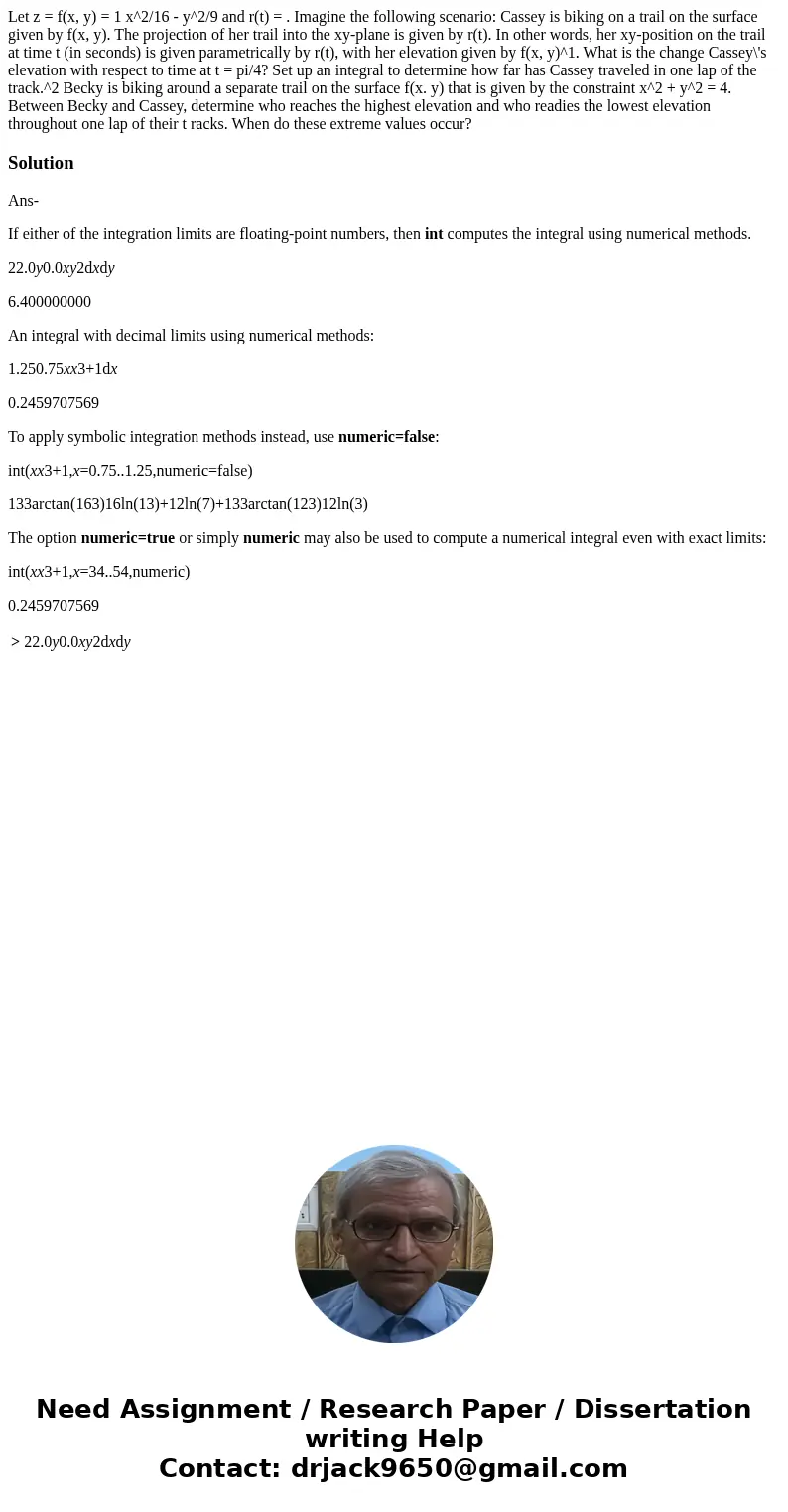Let z fx y 1 x216 y29 and rt Imagine the following scen
Let z = f(x, y) = 1 x^2/16 - y^2/9 and r(t) = . Imagine the following scenario: Cassey is biking on a trail on the surface given by f(x, y). The projection of her trail into the xy-plane is given by r(t). In other words, her xy-position on the trail at time t (in seconds) is given parametrically by r(t), with her elevation given by f(x, y)^1. What is the change Cassey\'s elevation with respect to time at t = pi/4? Set up an integral to determine how far has Cassey traveled in one lap of the track.^2 Becky is biking around a separate trail on the surface f(x. y) that is given by the constraint x^2 + y^2 = 4. Between Becky and Cassey, determine who reaches the highest elevation and who readies the lowest elevation throughout one lap of their t racks. When do these extreme values occur?

Solution
Ans-
If either of the integration limits are floating-point numbers, then int computes the integral using numerical methods.
22.0y0.0xy2dxdy
6.400000000
An integral with decimal limits using numerical methods:
1.250.75xx3+1dx
0.2459707569
To apply symbolic integration methods instead, use numeric=false:
int(xx3+1,x=0.75..1.25,numeric=false)
133arctan(163)16ln(13)+12ln(7)+133arctan(123)12ln(3)
The option numeric=true or simply numeric may also be used to compute a numerical integral even with exact limits:
int(xx3+1,x=34..54,numeric)
0.2459707569
| > | 22.0y0.0xy2dxdy |

 Homework Sourse
Homework Sourse